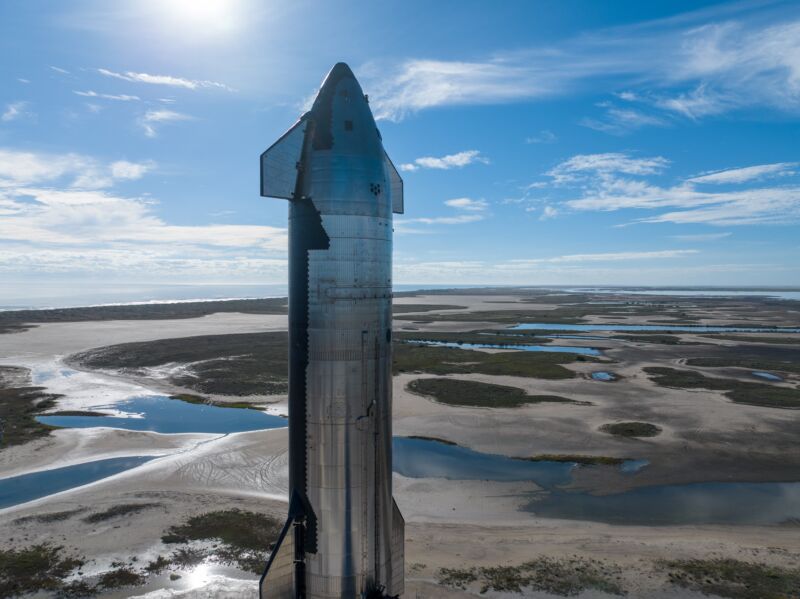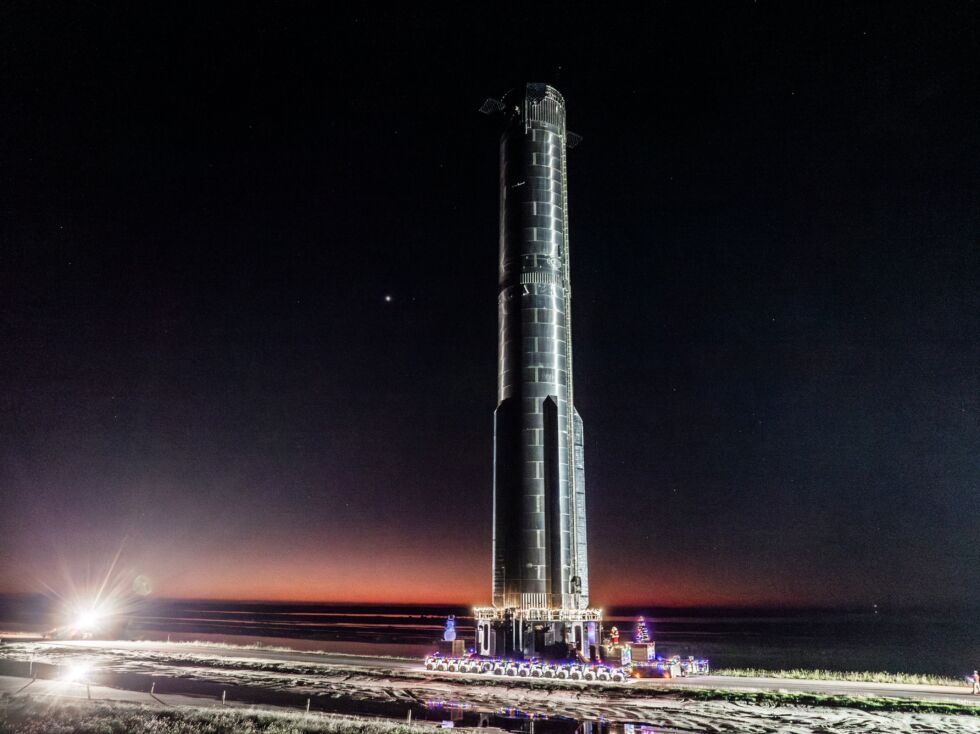
Enlarge / Ship 28 is seen after being moved to SpaceX’s launch site in South Texas.
SpaceX
Just one month after the second flight of its massive Starship rocket, SpaceX is making progress toward a third attempt.
On Wednesday, at 1: 37 pm local time in South Texas, the company performed a static fire test of the next Starship—which bears the serial number Ship 28. The test of the rocket’s six engines appeared to be nominal as the Raptors ignited for a handful of seconds. The rocket and ground support equipment looked undamaged after the test.
Also this week SpaceX rolled the booster to be used for the next attempt—Booster 10—to the launch site at its Starbase facility in South Texas. The vehicle has since been lifted onto the orbital launch mount. Presumably this rocket, too, will undergo a static fire test in the coming days.
After these tests are complete the Starship upper stage is likely to be stacked on top of the booster to complete the launch vehicle. At this point it seems likely that the hardware for “Integrated Flight Test 3” would be substantially ready to launch.
With this third flight, SpaceX will seek to fly further into a profile that will see Starship ultimately make a controlled landing into the ocean north of Kauai, Hawaii. SpaceX may also perform an in-space propellant transfer test, but this has not been confirmed.
Starship’s second launch attempt, on November 18, was notably more successful than the first attempt in April 2023. The second flight test demonstrated substantial improvements in engine reliability and provided valuable data about a challenging “hot staging” maneuver to separate the Super Heavy booster from the Starship upper stage.
Another test flight soon?
Recently Kathy Lueders, SpaceX’s general manager for the Starbase launch site near Brownsville, said the company will target the first quarter of next year for this third test flight. “It would be great if we were in the first quarter, definitely,” she said. “Elon [Musk] obviously would probably say the end of December, but I don’t think we’ll get there.”
Since the second test flight occurred, neither the company nor SpaceX founder Elon Musk has provided a technical update on what ultimately went wrong with the Starship upper stage, which failed a few minutes into its flight, or why the booster was ultimately lost after it separated from the Starship vehicle.

Enlarge / Booster 10, with a few holiday decorations, is rolled to the launch site in South Texas.
SpaceX
However, far fewer modifications have been made to the rocket hardware or the launch site ahead of this third attempt, suggesting that at least some of the problems may have been flight software-related.
SpaceX has yet to receive regulatory approval for a third launch of Starship. The Federal Aviation Administration characterized the second attempt in November as a “mishap,” while acknowledging that no injuries or public property damage were reported.
After the anomaly, the agency said, via the social media site X, that “the FAA will oversee the @SpaceX-led mishap investigation to ensure SpaceX complies with its FAA-approved mishap investigation plan and other regulatory requirements.” The FAA has provided no additional information in the month since then.